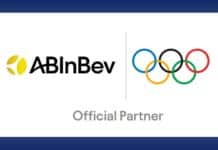★ The Sports Examiner: Chronicling the key competitive, economic and political forces shaping elite sport and the Olympic Movement.★
★ To get the daily Sports Examiner Recap by e-mail: sign up here! ★
≡ “WHEREABOUTS” TESTING ≡
Doping has been an issue in Olympic sport for decades, most blatantly demonstrated by the German Democratic Republic in the 1970s and 1980s, when East German stars – especially women – dominated their sports and won medals by the dozens via a state-run doping system.
The International Olympic Committee banned performance-enhancing drug use in 1967, but it was the startling disqualification of Canadian 100 m star Ben Johnson at the Seoul Olympic Games in 1988 that drove home the need to do something serious about doping.
The anti-doping movement was growing up, becoming more sophisticated and in 1999, the World Anti-Doping Agency was formed. While not a perfect answer, it centralized the rule-making program for doping and brought together the sports movement – through IOC funding – and governments, who signed on to help fight drug use in sport.
The key element demanded by athletes and coaches was the introduction of out-of-competition testing, so that athletes were not only monitored at competitions, but during training when the most important benefits of doping were realized.
Today, the top athletes are subject to being tested anywhere and at any time, and are required to make themselves available on demand to produce a testing sample, usually urine. Blood samples are also taken and will eventually be the primary samples used, but not yet.
The process by which the top athletes, who are registered by various anti-doping organizations depending on sport and country, are found is called “Whereabouts.”
It is a price that Olympic-sport athletes pay to complete at the highest levels of their sport. In track & field, the highly-regarded Athletics Integrity Unit was set up in 2017 as the first independent, sport-based testing agency, that also monitors betting and other aspects of cheating throughout the sport.
The AIU published a clear, concise guide to “Whereabouts” in 2024 that spells out just what is expected:
● “The World Athletics Registered Testing Pool (RTP) is a select group of elite athletes who are subject to regular out- of-competition tests and responsible for providing Whereabouts information.”
● “You are required to provide sufficient detail in your Whereabouts to enable a DCO to locate you for unannounced testing, without making a phone call or asking neighbors for direction. The AIU generally advises DCOs not to place a phone call. You can be tested at any time, also outside of your 60-minute time slot.”
● “The AIU, your NADO [National Anti-Doping Organization] and other NADOs with authority may use your whereabouts to test you.”
● “Your Whereabouts shall be submitted four times per year and must be kept updated throughout the year. The quarterly deadlines are 15 March, 15 June, 15 September and 15 December.”
Information required to be provided to the AIU includes:
(1) A 60-minute time slot when you can be tested daily and will be at a specific address (usually at home).
(2) A schedule of “regular activities” including training and work or class schedules (and locations).
(3) Travel schedules, including the location of any overnight accommodations, such as for competitions, including room number and telephone number.
The brochure notes that the filing of the quarterly Whereabouts reports may be made by someone else, such as a family member or manager. But, any changes which would impact a visit from a Doping Control Officer must be reported, and “Remember, you remain directly and ultimately responsible for any failure to comply with your Whereabouts requirements.”
This is to be taken seriously. In 2023, the AIU tested 3,504 athletes from 136 countries a total of 9,803 times. Of those, 56% were out-of-competition tests, mostly on the 857 athletes who were in the AIU Registered Testing Pool. The AIU warns:
“You cannot refuse testing. Refusal = testing positive, therefore a likely 4-year ban. As soon as you are aware a [Doping Control Officer] is there to test you, you must comply.”
There are penalties for missing Whereabouts tests – this is different from refusing to provide a specimen – with three missed tests in a 12-month period bringing suspensions of up to two years, disqualifications of results and financial penalties.
This is a pain, and the testing process, while mundane, simply has to be tolerated. But it is required of thousands of athletes across all of the Olympic sports in order to compete at the world-class level and be eligible to participate in the Olympic Games.
It’s not all about medals, free shoes and sponsorships.
¶
★ Receive our exclusive, weekday TSX Recap by e-mail by clicking here.
★ Sign up a friend to receive the TSX Recap by clicking here.
★ Please consider a donation here to keep this site going.
For our updated, 895-event International Sports Calendar for 2025 and beyond, by date and by sport, click here!




























